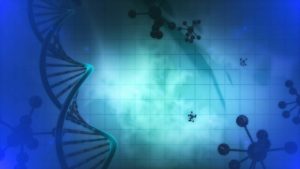Over the years, there have been a positive outcome from anti-cancer drugs. Despite these drug’s effectiveness, another problem arise from long term usage of these drugs and subsequent evolution. Drug resistance is a well-known phenomenon in the medical and pharmaceutical world which results when diseases build up a gradual tolerance to pharmaceutical treatments. This phenomenon was first observed when bacteria became resistant to certain antibiotics. They evolve naturally via natural selection through series of random and deletion mutations. Once a new fabricated gene is generated, the bacteria then transfer the genetic information in a horizontal manner between individuals by plasmid exchange and timely cell division. This similar mechanisms have been observed to occur in other diseases, including cancer. Some methods of drug resistance have been confirmed to be disease-specific, while some others, such as drug efflux which are observed in human drug-resistant cancers and microbes are evolutionarily conserved.
Furthermore, this is a heartbreaking story that happens too often. In some cases, cancerous cells will stop responding to the treatments available to them—patients with chronic cancer may receive a drug that helps to shrink their tumors thereby allowing them to spend more time with their beloved ones and family, surprisingly, weeks or months later the cancer returns and the drug no longer poses effectiveness again.
Resistance to drugs remains one of the biggest threats and challenges in cancer therapy. It has been studied to exist across all forms of cancer and the available modes of treatment globally, including chemotherapy, immunotherapy and molecular targeted therapy. Although many types of cancers are initially susceptible to chemotherapy, however, over a long period they also develop resistance through some mechanisms like the DNA mutations and metabolic changes that promote drug inhibition and degradation
Recent Discoveries
Imagine if you could stop cancer from spreading by converting cancerous cells into something less harmful like fat cells. In the recent breakthrough scientist in switzerland have discovered something great. They have not only stop cancer cells from spreading to other cells but also transform them into harmless fat cells.
So how does this work? When cancerous cells break away from the main tumor to enter into the bloodstream to form new tumors in other part of the body this process is called Metastasis. During this process the cells temporarily enter an immature cell similar to stem cells. This new stage is the Epithelial mesenchyma transition (EMT) wherein the cell are in highly plastic and adaptable stage.
More so, EMT is essential for embryonic development in which stem cells differentiate into various types of cell throughout the body and for tissue regeneration during healing of wounds. Tallying the advantages of plasticity of some cancer cells during metastasis, the scientist where able to drive breast cancer cell in mice to become fat cells.
Initially, they transplanted human breast cancer cells into a female mice then later treated the mice with two FDA approved drugs. The first Rosiglitazone which is use for human to treat Type 2 diabetes. This drug is known to induce the conversion of stem cells into fat cells. The second being known as Trametinib: an anticancer drug that inhibit growth and spread of cancer cells. The discovery in this study found that when the mice receive this cocktail of the two drugs the cancer cell that had broken free from the initial tumor changed into fat cells.
Now you may be asking the question: Why would we want to convert cancer cells into fat cells? there are few reason for doing this, one of which is that the fat cells formed doesn’t divide to produce more cancerous cells. The other advantage is that that fat cells are highly differentiated so they are kind of in the end stage of their functions and they do not return back to original cell types. This means that they will not go back to become an aggressive cancer cell ever again.
However in recent studies not all cancer cells can be converted into fat cells but the ones that did remain as fat cells . Although right now we only know this process works in mice whether or not it is effective in humans remain unknown. A great deal of experimental work is needed before this research can be translate into human treatment. Conversely, the discovery is incredibly promising as there is light at the end of the tunnel
Drug free treatment of cancer
Tumors have been observed as an ecological system that evolves over time. Scientists therefore seize the chance by applying the concepts of evolutionary ecology to study how cancer behaves and its response to treatment. They found out that the interactions between drug resistance and non-drug resistance cancerous cells were different under distinct conditions. It was now suggested that changing the types of interactions between cells can co-opt the cells evolutionary way to a better way that will help the patient by preventing drug-resistant cells from replicating. Undoubtedly, this is an effective way against drug resistance.
Similarly, another team of researchers and scientists discovered that healthy blood vessel cells may be an encouraging treatment against drug resistance in cancer through a molecule used in cellular communication called FAK–Focal Adhesion Kinase. Plus, some other researchers are also making use of blood samples as a new potential method to gather precious cancer cells in the study of drug resistance. These liquid biopsies are showing great promise as there as another light is seen at the end of the tunnel.
There are other treatments of cancer which unlikely lead to drug resistance, some which are :
1. Surgery – Except for blood cancers, surgery is an option for most cancers in which specialized cancer surgeons removes most or the entire solid tumor. It is specifically an effective treatment for most early stage cancers such as ovarian and breast cancer that are yet to spread to other parts of the body. More so, Surgery can also play its role in cancer treatment even though when it spread beyond the initial stage
2. Targeted therapies- Cancer specialist–Oncologists developed these therapies which is also known as Precision Medicine which involves tailoring medications for each individual patient and cancer. Firstly, the tumor or blood sample is tested in order to identify the genetic profile. This allow the clinicians to be able administer medication that will directly targets the genes that inhibit cancer — this method either destroy the cancerous cells or stop the cancer from growing.
3. Immunotherapy— An effective yet relatively newer kind of cancer treatment This clinical practice involves uses of medications to power-up the patient’s immune system to fight cancer. It has been studied to work across all distinct types of cancer types and may also be effective in treating even the most advanced ones. With this, patients rarely experience hair loss, nausea or vomiting— most times, they experience minimum side effect.
Writer: Ahmad Abdullah
University of ilorin, Kwara State, NIGERIA



This is an educative piece
Nice research!
Thank you
Has there been any experimentation of converting tumor cells to fat cells practically in humans lately?
Actually, the answer is NO, lots of experiments need to be done to confirm its feasibility in human…however the discovery is highly promising